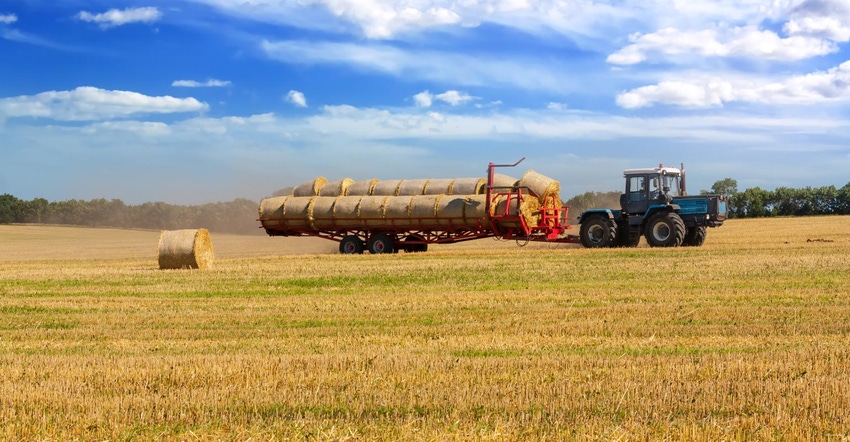A University of Missouri Extension livestock specialist offers advice for farmers.
July 21, 2020

This year is shaping up for another bountiful hay crop, says Eldon Cole, University of Missouri Extension livestock specialist. Farmers need to pay attention to hay preparation and price before selling.
According to the Missouri Department of Agriculture, the state ranks sixth in hay production at 5.4 million tons annually. Unfortunately, Cole says, the hay production is “not always the greatest quality.”
When it comes to high-quality hay, such as alfalfa, Missouri typically is ranked about 20th. “The category we excel in is other grass hay, specifically cool-season grass or mostly fescue,” Cole explains.
He found this year that Missouri ranked second in the nation, behind South Dakota, for carryover of hay stocks. “That rank was likely due to an abundance of hay harvested in 2019, thanks to above-normal rainfall over most of the state last year,” Cole notes.
Where to find hay prices
Cole often is asked about how to price hay and says it is difficult to find current hay prices. However, he notes that hay prices are more organized for alfalfa. “They use grades such as premium, supreme, good and fair,” he explains. “In some states, it’s rated as dairy, grinding, horse and goat quality.”
However, Cole’s preference is to be more objective with the score and price rather than the subjective evaluation. He gives the following example: A recent report from Kansas indicated the price was $1 per Relative Feed Value or RFV point for alfalfa hay. Thus, if the RFV was 142, the price per ton was $142.
Searching for fescue hay prices is cumbersome as they are not listed in magazines or trade journals. Cole says the only price locations were from the Missouri Weekly Hay Report, where fair-quality mixed grass hay was priced at $40 to $50 per large round or $20 to $40 per 4-by-5 round bale.
Tips for top price
Whether you’re buying or selling hay, Cole encourages farmers to do two things:
1. Weigh bales. Use a scale to get accurate weights on large bales. “All big rounds do not weigh 1,000 pounds,” he says. He finds more weigh less than 1,000 pounds compared to what farmers think.
2. Sample bales. Cole recommends core sampling 10 to 15 bales. Send the samples to a lab for a test. The test will cost about $25, but it provides data on moisture content, fiber levels, energy and protein. It also calculates an RFV or Relative Forage Quality (RFQ). This combined information, he says, helps farmers arrive at a best price for the hay.
Assess hay bale quality
Now is a good time to buy hay, Cole says. However, assessing the quality of the bale is important before handing over money. He says farmers should look for quality hay that is well wrapped.
After the purchase, store hay bales in a barn if possible. If no barn is available, Cole says farmers should locate the hay bale yard in a well-drained area out in the open with easy access in the winter for feeding.
The greatest expense cattle producers face each year is forage cost, whether it is pasture, hay or haylage. “Use a sharp pencil to evaluate whether to raise your own hay or to buy it,” Cole adds. “You may be surprised at what you find.”
Source: University of Missouri Extension, which is solely responsible for the information provided and is wholly owned by the source. Informa Business Media and all its subsidiaries are not responsible for any of the content contained in this information asset.
You May Also Like



